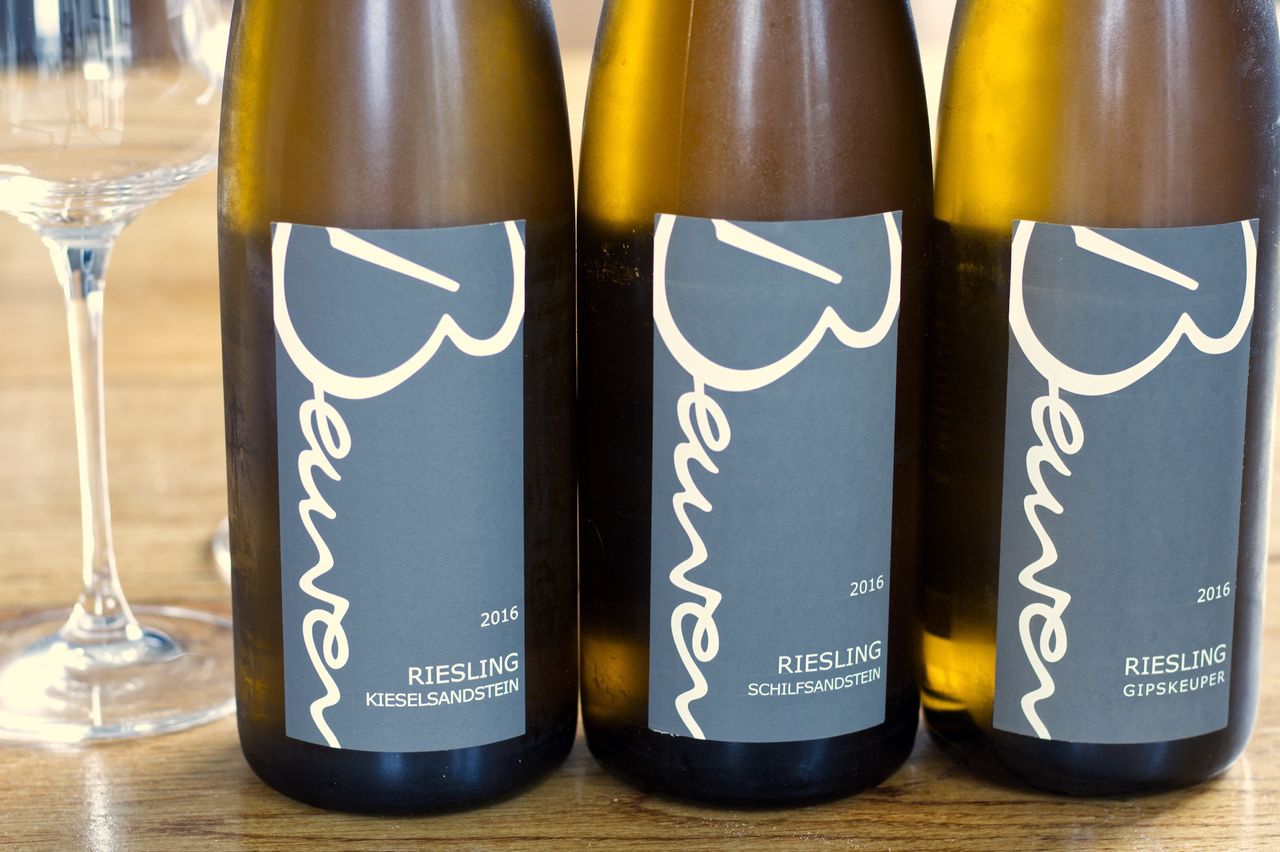Three Bottles Beurer
With Rieslings from Gipskeuper, Schilfsandstein and Kieselsandstein from 2016 by Jochen Beurer, we seek the soil in the wine.

Wine is influenced by many factors: Weather, location and winemaker are certainly the most important ones, but then there is age, storage conditions, the taster’s daily form and much more. If you want to compare a single factor, it is not an easy task. But with three Rieslings from Jochen Beurer located in the Rems valley you can at least try to get a bit closer. Same winegrower, roughly the same weather, because the vineyards are not too far apart and all from the same year and drunk by several people in one evening. So the location, or rather the soil, remains a big difference. We drink Rieslings from Gipskeuper, from Schilfsandstein (reed sandstone) and from Kieselsandstein (pebble sandstone) from 2016.
Let’s start with the Gipskeuper. In the nose fruity, citrus, very fresh, light flint, in the mouth relatively high amount of acidity and bitter citrus peel. At the top of the palate you can feel structure of the extract and a pleasant pull. Reminds a bit of sour apple jelly rings. In the course of the evening it becomes softer, the flint decreases and the apple rings can be clearly tasted. Full, round wine.
The Schilfsandstein on the other hand starts off very reserved, less reductive flint notes, less citrus fruit, but stone fruit. Mirabelle plums in the mouth, overall a clearer, more sinewy wine. The flint emerges with time, but also fades away and makes room for a great mineral spice with lots of light fruit. The clearest wine this evening and incredibly juicy.
Kieselsandstein starts with ripe apple, almost sweet in the nose and even less flint than already in reed sandstone. In the mouth the wine is very soft but also fresh and clear. The light citrus bitter notes in the other two cannot be tasted here at the moment. Even juicier than the previous one. With air comes an idea of Colorado jellygum, subtle liquorice with exotic fruit, but not long, then we feel a very clear acidity and creaminess on the tongue.
After four hours in the open bottle and glasses, the Kieselsandstein is the wine of the evening. It is clear, fruity and has a mineral edge at the back of the mouth, which invites to empty the bottle fast. As a complete package it is simply one step ahead of the other two. But all in all these are three really good Rieslings, which are a real recommendation with prices between 12 and 15 Euros from the winery. Especially exciting in direct comparison as done here.